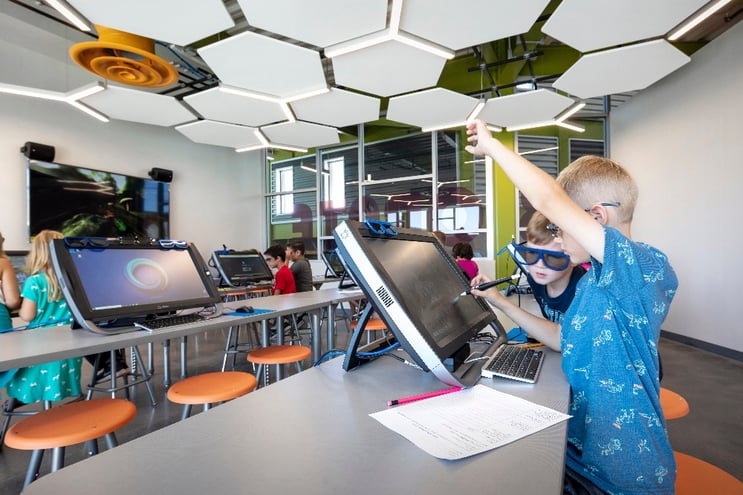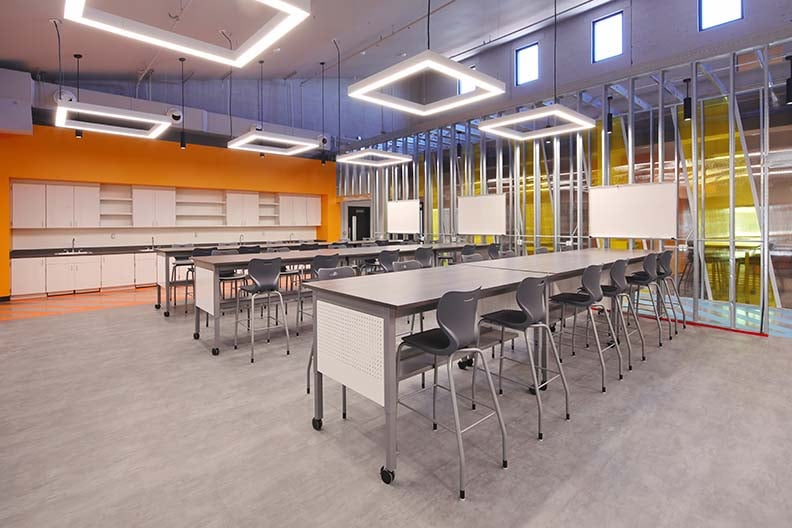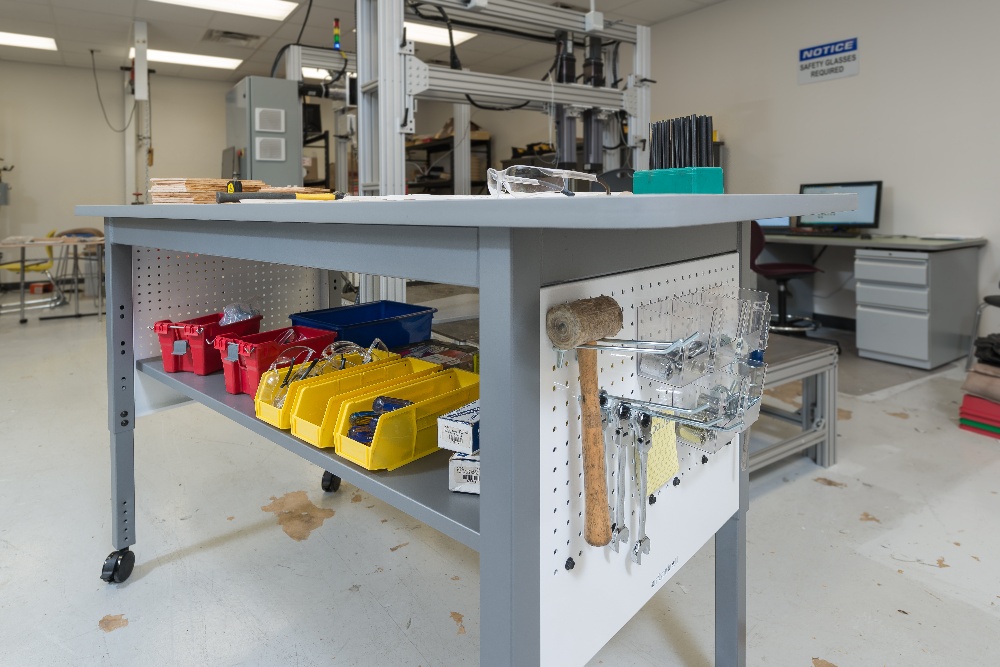A MAKER SPACE IS A PLACE WHERE STUDENTS MAKE “MEANING”
And turn knowledge into action. Where hands-on learning provides opportunities to make, create, play, test, and learn.
As you design your maker space environment, think about how it will function, how it supports student learning outcomes, and how it will make students feel. To get started: Download the maker space planning guide.

3 maker space must-haves
Maker spaces have become a popular trend in education, providing students with hands-on learning opportunities and a chance to turn their knowledge into action. As you design your own maker space, it's important to stay up-to-date with the latest trends.
- Flexible classroom furniture is crucial for creating a dynamic learning environment. It allows for easy reconfiguration and promotes collaboration among students.
- Technology-infused classrooms are on the rise, with sleek surfaces and tables that accommodate individual users. These classrooms are equipped for projects like programming, robotics, and 3D design.
- Learning commons can also serve as collaborative maker space labs. Configurable tables and chairs provide flexibility for different activities. By incorporating these trends into your maker space, you can create an environment that supports student learning outcomes and inspires creativity.

helpful links to CLASSROOM DESIGN TRENDS
a place where students can tinker their ideas into meaning
Maker spaces have revolutionized education by providing students with a place where they can turn their ideas into meaningful creations. These spaces not only allow for hands-on learning experiences but also foster creativity, collaboration, and problem-solving skills.
EXPLORE CLASSROOM SETUP IDEAS
Click through classroom ideas below or visit our image gallery of learning spaces designed to promote comfort, configurability, mobility, and accessibility in a variety of classroom environments.

TECHNOLOGY INFUSED CLASSROOMS
don't have to be tethered. Sleek, easy maintenance surfaces. Tables accommodate individual users and can be rolled together for large-scale projects like programming, robotics, and 3D design.

SHOP OR MECHANICS
Match your maker space furniture with its purpose. Heavy duty tables belong with heavy duty projects.
ROBOTICS CENTER
Robotics centers need lots of storage cabinets that can move where they're needed when they're needed.

LEARNING COMMONS
Learning Commons can function as collaborative maker space labs with configurable tables and chairs.

SIT OR STAND?
Accommodate students' need to move during class or throughout projects by offering work spaces at various heights.

SEW FUN!
Calling all young creators! Use our maker space tables, storage, and flip + nest tables to design an inviting space for students to explore the world of sewing!

TOTS CAN TINKER, TOO
Calling all teachers! Are you looking for a new and exciting way to engage your students in learning? Why not create a tinker lab in your classroom?
Tinker labs are a great way to promote creativity, innovation, and problem-solving skills. By providing your students with materials and tools to explore and experiment with, you can inspire them to think outside the box and come up with their own unique ideas.

WHEEL 'EM AROUND
Science labs and maker spaces are all about exploration, creativity, and innovation. And one of the best things about them is their flexibility!
TRANSFORM KNOWLEDGE INTO ACTION
Maker spaces offer students the opportunity to transform knowledge into action through hands-on learning. As you design your own maker space, it's important to consider how it will function, support student learning outcomes, and create a positive environment. To help you get started, download the maker space planning guide and explore the helpful links to classroom design trends. Flexible furniture is crucial for flexible learning, and our virtual classrooms showcase various seating options and collaborative work surfaces. Whether you're interested in technology-infused classrooms, robotics centers, or learning commons, there are furniture solutions available to match your maker space's purpose. Remember, classroom design matters, and by creating inviting, innovative, and accessible learning spaces, you can inspire creativity, problem-solving skills, and unique ideas among your students. So, don't hesitate to explore different classroom setup ideas and engage further in designing your own maker space.
Photography credit:
- Marana, photo by Corgan
Recent Posts
In part one of our series on thoughtful classroom design, we heard an educator’s perspective on...
In part one of our series on thoughtful classroom design, we heard an educator’s perspective on...


